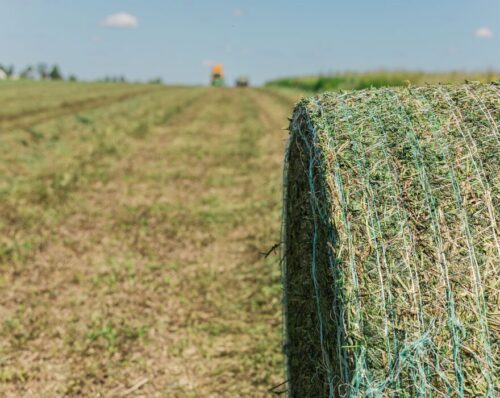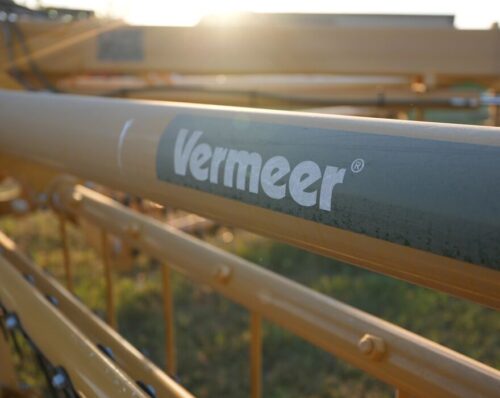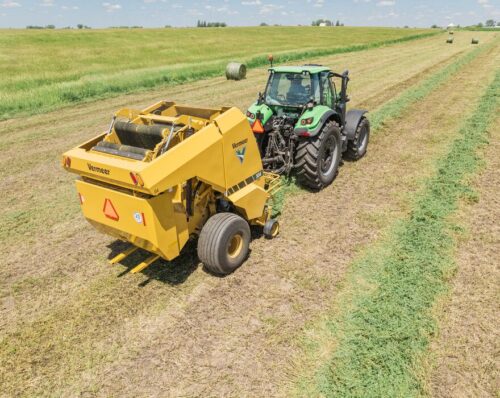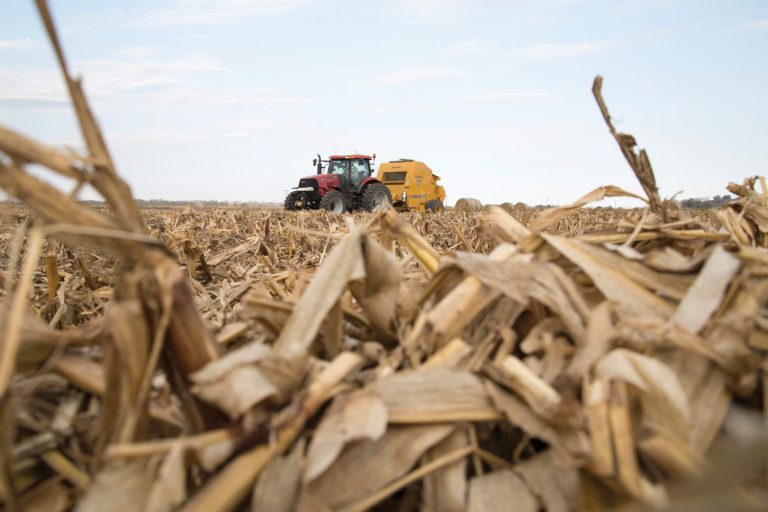
Tips on Pricing Forage in the Field
July 2020
Standing forage crops — namely corn silage, oats, cornstalks and standing hay — have distinct value that should be well-represented in any forage marketing strategy, experts say. The market is highly variable for these crops, making it important to be attentive to physical crop characteristics, like relative feed value, in arriving at the right price point.
In the absence of standard macro-level market pricing, arriving at the right value for a feedstock, like corn silage, typically requires a comparison with a similar product that does have a known market price. For silage, that’s usually corn grain, and arriving at the right price involves accounting for some of the same variables that go into the balance sheet for corn producers, according to Chad Hart, Iowa State University Extension economist. By using common benchmark values for corn grain, the value of corn silage can be derived through a series of ratios.
“Taking into account the value of the grain, the extra fertilizer cost incurred and the harvesting costs saved, a ton of corn silage in the field is usually worth 8-10 times as much as a bushel of corn, depending on the potential grain yield,” said Hart, who co-authored a recent university report on pricing forage crops in the field with retired Iowa State University Extension Economist William Edwards. “Silage from a field that would yield above 200 U.S. bushels per acre (0.4 hectare) can be valued at 10 times the corn price. But if the potential yield is less than 100 U.S. bushels per acre (0.4 hectare), the silage should be valued at only eight times the corn price.”
"a ton of corn silage in the field is usually worth 8-10 times as much as a bushel of corn"
Those ratios are accurate, given the silage’s harvested moisture level at 65 percent. “To adjust for other moisture levels, subtract the actual moisture level from 100, divide by 35, then multiply by the estimated value for 65 percent moisture silage,” Hart said.
More corn silage value factors
If silage has already been harvested, its value is higher, usually between 10 and 12 times the local harvest-time price of a bushel of corn. That exact valuation depends on the corn’s overall yield potential.
“As a rule of thumb, each U.S. bushel of 15 percent moisture corn is equivalent to .135 t (.1 mT) of 65 percent moisture corn silage. So, a field with an expected yield of 170 U.S. bushels per acre (0.4 hectare) could be expected to produce (170 x .135) = 23 t (20.9 mT) of silage,” Hart said. “Nearby fields can be used to estimate grain yield, or check strips can be left in the harvested field. Corn that is severely damaged by drought may produce more tons of silage per bushel of grain.”
It’s not always just the value of the corn in the field being ensiled that can help contribute to the right silage price point. Corn stover also has a specific value, but like silage, requires a benchmark market to determine that value accurately.
“A more precise value can be placed on corn silage by considering the value of the corn stover part of the plant, as well as the grain. The current market value of a ton of grass hay can be used as a measure of stover feed value. The overall value of a ton of silage will be a weighted average of the grain and forage components,” Hart said. “For normal yielding corn, the pounds of dry matter contained in grain and in stover can be considered to be equal. However, for lower yielding corn, such as may be the case in a drought year, the percent of the total dry matter contained in grain will be less – as low as 25 to 40 percent. This will tend to make the silage have a lower feed value.”
What about oats?
Just like corn silage, pricing ensiled oats accurately depends on the oats grain market. Oat silage usually has a lower feed value than corn silage and depends on different factors.
“Standing oats sold for silage can be priced relative to oats grain. As with corn silage, the ratio of the grain/silage price depends on several factors. Given limited data on oat silage pricing, historical analysis shows that the oat grain/silage ratio is roughly double that for corn,” Hart said. “Roughly one t (.9 mT) of 70 percent moisture oat silage can be harvested for each 12 U.S. bushels of oats that could be harvested as grain. Oat silage is higher in percent crude protein than corn silage but lower in percent total digestible nutrients (TDN), so its feeding value is approximately 85 percent that of corn silage.”
Pricing haylage and standing hay
When it comes to pricing a standing hay crop, look to the land rent market for hay acres. It’s another case in which local supply and demand have a lot to do with establishing an accurate market price. That price should account for any relevant fieldwork to prepare the forage for the buyer.
“The value of standing hay can be estimated by subtracting harvesting costs from the market value of the same hay. Custom rates can be used to estimate harvesting costs. For haylage, the feed value of a ton (.9 mT) of 40-50 percent moisture unharvested haylage can be estimated as equal to roughly half that of a ton (.9 mT) of dry hay, minus the costs for windrowing, harvesting and hauling,” Hart said. “Some owners prefer to keep part of the hay crop instead of charging cash rent. For an established crop for which the owner pays all the fertility costs, the owner is probably entitled to about 60 percent. If the person who harvests the crop pays part of the establishment and fertility costs, the owner’s share should probably be only 40-50 percent.”
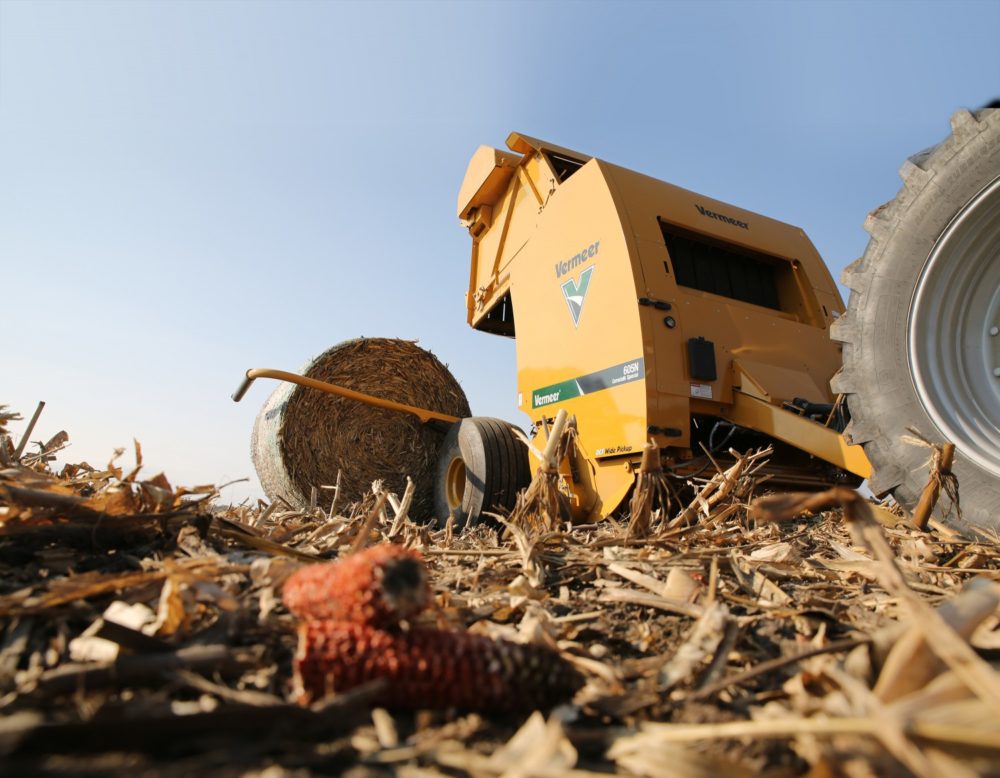
Assigning a value to cornstalks
Each ton of harvested cornstalks has a value of around 50 percent of the value of grass hay (on a per-ton basis). If the buyer harvests the stalks, pricing is usually around one quarter of the total price of comparable grass hay. If you’re pricing baled cornstalks and weighing large round bales is not feasible, surface measurements can help reach a fair market price.
“When hay or cornstalks are harvested as large round bales, weighing them may not be convenient. The weight of a large round hay bale can be estimated by multiplying the length of the bale (in inches) by the diameter squared (in inches) and dividing by 200. For cornstalk bales, divide by 300,” Hart said.
Though these general numbers can help assign value to your silage or other feedstock when marketing it to buyers, pricing every forage type requires attention to the local marketplace and supply/demand factors, Hart added.
“In years of low production, prices for standing forages may be considerably higher. On the other hand, when feed is in good supply the landowner may have to accept a lower price,” he said. “If there is no ready alternative use for the feed, then both buyer and seller will still benefit from the sale.”
Information noted above was gathered from a third party who was advised his/her experience might be featured in marketing materials. This article contains third-party observations, advice or experiences that do not necessarily reflect the opinions of Vermeer Corporation, its affiliates or its dealers.
Individual results may vary based on care and operation of machine and crop and field conditions, which may adversely affect performance.
Vermeer Corporation reserves the right to make changes in engineering, design and specifications; add improvements; or discontinue manufacturing at any time without notice or obligation. Equipment shown is for illustrative purposes only and may display optional accessories or components specific to their global region.
Please contact your local Vermeer dealer for more information on machine specifications.
Vermeer and the Vermeer logo are trademarks of Vermeer Manufacturing Company in the U.S. and/or other countries.
© 2019 Vermeer Corporation. All Rights Reserved.




